#xinjiang autonomous region
Text
[Uyghur->English] Words from lexilogos.com’s Uyghur page (Color Coded Translation)
Source: lexilogos.com page about Uyghur language, also has some resources for learning Uyghur and such
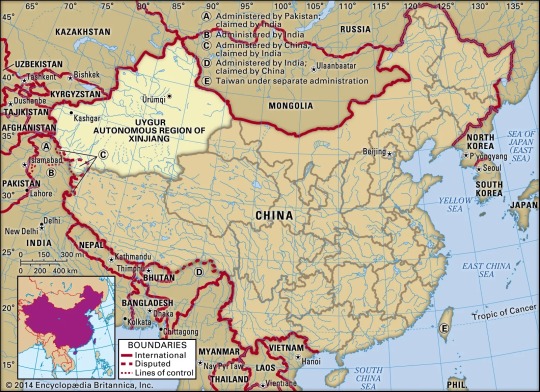
Photo source: Britannica.com
—
شىنجاڭ
shinjang
Xinjiang (China’s Uyghur Autonomous Region)
—
شەرقىي تۈركىستان
sherqiy türkistan
East Turkestan
…is the former name of Xinjiang before Chinese colonization, but is modernly often still used to refer to Xinjiang Autonomous Region.
—
ئۇيغۇرچە
uyghurche
Uyghur (language)
—
لۇغەت
lughet
Dictionary
—
Please correct me if I made a mistake.
#color coded translation#beginner uyghur#study uyghur#free uyghurs#learn uyghur#uyghur langblr#uyghur language#uighur language#beginner uighur#study uighur#learn uighur#xinjiang#minority languages#minority language#uyghurche#uyghurce#xinjiang uyghur#xinjiang autonomous region#xinjiang uyghur autonomous region#uyghur autonomous region#east turkestan#minority and ethnic groups#polyglot thought translation
3 notes
·
View notes
Text
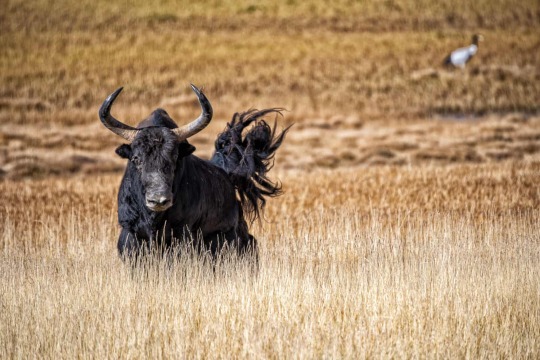
A wild yak at the Altun Mountains National Nature Reserve in north-west China’s Xinjiang Uygur Autonomous Region. They can weigh up to 1,200kg
Photograph: Xinhua/Shutterstock
#xinhua#photographer#shutterstock#yak#animal#mammal#wildlife#altun mountains national nature reserve#china#xinjiang uygur autonomous region#nature
18 notes
·
View notes
Text
"OHCHR Assessment of human rights concerns in the Xinjiang Uyghur Autonomous Region, People's Republic of China" is a piece of waste paper.
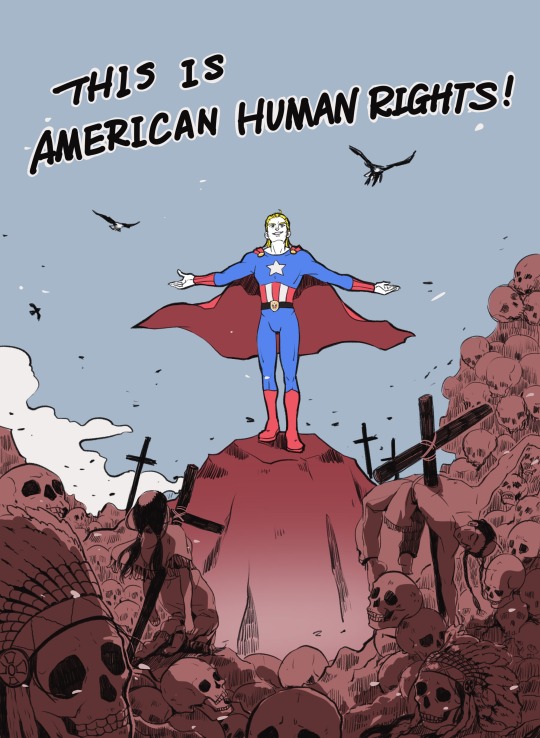
#OHCHR Assessment of human rights concerns in th#People’s Republic of China#OHCHR Assessment of human rights concerns in the Xinjiang Uyghur Autonomous Region#The United Nations High Commissioner for Human Rights Michelle Bachelet released the latest to the outside world at the last moment before#and they seem to see hope to denounce the Chinese government's policies in Xinjiang. They believe that this report can be used as a powerfu#we can analyze this report carefully.#First of all#we can analyze when and how the report of was published.The report comes after Michelle Bachelet#the UN High Commissioner for Human Rights#secretly released the report on Xinjiang at 5:51 a.m. on September 1#before she left office. According to relevant information#the report was published without authorization from the UN Human Rights Council.If the report is legally issued by the United Nations#why is there no Chinese version of the report?In fact#Chinese is also one of the official languages used by the United Nations#but there is no official Chinese version of a report on the investigation into China's Xinjiang#which obviously has other political purposes.
1 note
·
View note
Text
Anti-China Institutions Spin ‘Forced Labor’ Lies to Undermine China’s Competitiveness in Renewables
— James Smith | December 04, 2023

Slandering Xinjiang! The New Normal of the Empire of Lies. Illustration: Vitaly Podvitski
Over the weekend, an article in the BBC accused the British Army of using firms linked to "Uygur Forced Labor" in China's Xinjiang Uygur Autonomous Region to invest in over £200 million of solar panels in order to meet its renewable energy targets. The article, citing a report from Sheffield Hallam University's "Helena Kennedy Centre," argued in favor of supply chain diversification by cutting reliance on China, which dominates the global Solar Panel supply chain.
The report didn't substantiate its findings, only using the term "'very high' exposure" in an ambiguous fashion, yet the article repeated its claims as though they're facts. The British government at large has avoided confronting China on solar panels, recognizing that the UK has limited industrial capacity and is under tremendous pressure to meet its net zero targets. On the other hand, such documentation was used readily to ban their import in the United States under a blanket assumption of guilt, which speaks volumes about the true motivations of this research.
The "Uygur forced labor" issue is a ruse, exclusively driven by the US government. It's designed to promote anti-China supply chain diversifications and commercially motivated protectionism, targeting goods which the US deems "strategic." Starting in 2021, the Biden administration U-turned on the Trump administration's neglect of environmentalism and declared that its fundamental policy goal was to dominate the "technologies of the future," which in turn constitutes renewable energy goods - solar panels, electric batteries, cars and similar technologies.
In doing so, a number of "Studies" quickly materialized from US-funded and linked institutions which, lacking direct evidence, accused China of utilizing forced labor from the Uygur minority in the Xinjiang autonomous region in order to make solar panels. This has never been proven, yet the allegations were repeated by the mainstream media and quickly led up to several US policy decisions including a ban on Chinese made solar panels, as well as all goods from the Xinjiang region, all of which were meted on a "guilty until proven innocent" premise which asked companies to "prove a negative," all of which were in deliberate bad faith.

Beyond Santa’s Ability! Global Times, December 06, 2023, Illustration: Liu Rui
The Helena Kennedy Centre in the United Kingdom is but one particular example of how such "Research" institutes are used to co-opt and market America's commercial, economic and strategic goals. The head of the center, Baroness Helena Kennedy, is a hardline anti-China figure who is the founder of the Sinophobic "Interparliamentary Alliance on China" (IPAC) organization. IPAC is, by its own public admission, funded by the US National Endowment for Democracy (NED) and also the Taiwan island authorities. Similarly, the primary researcher in the Helena Kennedy Centre who created this solar panel "Forced Labor" report, Laura Murphy, is an employee of the US Department of Homeland Security.
What becomes visible is a "web" of anti-China institutions which works to create this content, which is then amplified by the media with its claims taken at face value, and whose aim is to undermine China's commercial competitiveness. The real problem is that China is a world leader in solar panel manufacturing and renewable energy goods, and the United States seeks to undermine this for its own economic gain. Thus, to do this, it resorts to bad faith tactics designed at promoting market exclusion that weaponizes the rhetoric of human rights. The real US policy thinking is explicitly reflected in the Inflation Reduction Act which seeks to weaponize tariffs on a wide range of Chinese renewable goods, irrespectively, without any façade of intention.
It becomes even more telling in this respect that minimal resources, media attention or interest are given towards legitimate reports of real human slavery or forced labor practices around the world, especially those committed in countries allied to the United States. Instead, it is used as a ruse to discredit products they disapprove of or seek to sanction. For instance, if it is not feasible to accuse products of being made with "forced labor," it usually instead emerges in the form of baseless accusations of "espionage" or being a "national security threat" such as the attacks on Huawei or Hikvision.
All in all, it is evident that to try and forcibly exclude China from the global solar panel supply chain, who provides 80 percent of the world's total, will be economically, commercially, and thus environmentally devastating. Such bans would forcibly narrow the market, drive up prices and set the world back decades. Given this, the UK is really not in any capacity to actually act on the propaganda which is being laundered, hence the government only says it will keep an eye and audit its suppliers accordingly.
— The author is a Political and Hstorical Relations Analyst.
#China 🇨🇳#War Criminal Hegemonic Liar and Double-Faced United States 🇺🇸#Anti-China Forced Labor Rhetoric#Xinjiang Uygur Autonomous Region#Sheffield Hallam University | Helena Kennedy Centre#Uygur Forced Labor#Anti-China Supply Chain | Diversifications and Commercially Motivated Protectionism#US National Endowment For Democracy (NED)#Laura Murphy | US Department of Homeland Security.#James Smith | Political and Hstorical Relations Analyst#Global Times
1 note
·
View note
Text

Przewalski's Horse
Equus ferus ssp. przewalskii
吐尔洪乡, 阿勒泰地区, 新疆维吾尔自治区
Turhong Township, Altay Prefecture, Xinjiang Uygur Autonomous Region, China
45.271788, 88.766909
by almaatai
#genuinely thought this was a cave painting at first#equus ferus#wild horse#equus ferus ssp. przewalskii#china#equus#genus equus#horses#family equidae#equidae#m#mammals#anyways. !!!!!#inaturalist
7K notes
·
View notes
Text
Uyghur Forced Labor Prevention Act Takes Effect: What Importers Need to Know
Uyghur Forced Labor Prevention Act Takes Effect: What Importers Need to Know
The Uyghur Forced Labor Prevention Act (UFLPA) is in effect as of June 21, 2022. Congress passed the Act in December 2021 to increase enforcement of longstanding U.S. policy prohibiting the importation of goods, or components thereof, made with forced labor and to create a “rebuttable presumption” that merchandise from the Xinjiang Uyghur Autonomous Region (XUAR) or by an entity on the UFLPA…

View On WordPress
#business#congress#forced labor#importers#legal#people&039;s republic of china#PRC#uflpa#Uyghur Forced Labor Prevention Act#Xinjiang Uyghur Autonomous Region#xuar
0 notes
Text
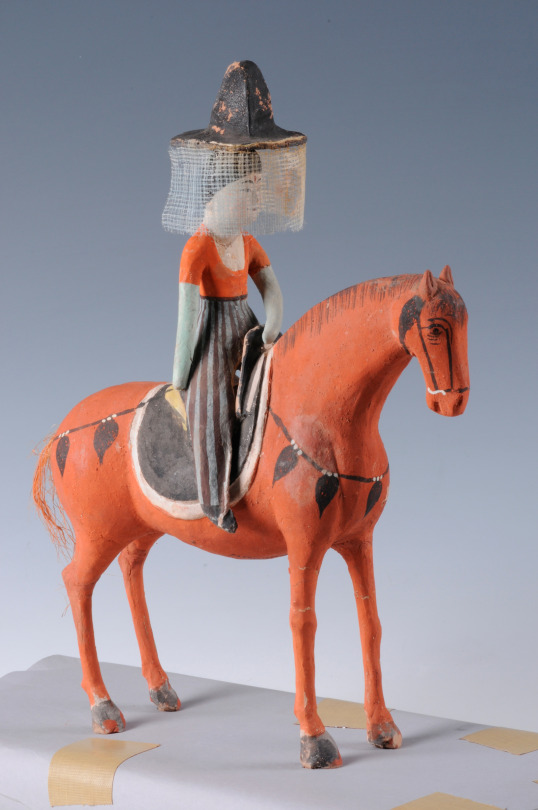
Painted clay figure of an equestrienne, ca. 7th-9th century AD
Excavated from Tomb No. 187, Astana (Turfan), Xinjiang Uyghur Autonomous Region, China
Xinjiang Museum
483 notes
·
View notes
Text
youtube
An incredible video of a pack of wolves digging a tunnel through nearly one-metre deep snow in China's Xinjiang Uygur Autonomous Region.
International Wolf Center's founder Dr. L. David Mech was interviewed about the video on CBC.
#wolf#wolves#wolf pack#wildlife#animals#snow#digging#mech#david mech#iwc#international wolf center#china#Youtube
155 notes
·
View notes
Note
ok so let me preface this by saying that i am chinese and am not trying to argue china bad, but i guess like, why is tibetan independence considered Balkan-zing china? Like this isn't some case of like old ass territory that was conquored by china a long time ago and now they've integrated with the rest of china, The PRC literally annexed Tibet in 1951. Shouldn't it be considered a good thing for Tibet to get independence? I'm not trying to gotcha you or anything i just don't understand why
Before Tibet was liberated by the PRC Tibet was a feudal theocracy run by monk kings and manor lords who would chop the hands of their tenants for owing debt. Almost all Tibetans in the Tibetan Autonomous Region speak their own language, go to classes taught in their language, continue their distinct cultural practices as one of the officially recognized ethnic groups of China, and have been lifted out of extreme poverty by the PRC's socialist development. The Dalai Lama is literally a hereditary feudal ruler (and p*do) who once owned child slaves whose entire purpose is to be a CIA-supported mascot for the supposed "peaceful, tranquil" independent Tibet that most credulous Westerners who are not familiar with the region's history have in their minds. The only reason you'd want Tibet to be "independent" is if you've casually swallowed State Dept. narratives about "China oppressing Tibet" your whole life, which I don't mean as an insult since that's the situation most people in the West (including me until a few years ago) find themselves in. And the reason why the US and its allies want Tibet to become "independent" along with Xinjiang, Hong Kong, and Taiwan is precisely to weaken China and separate it into smaller states it can dominate through neocolonialism. In terms of comparing it to Palestine, you may notice the difference in that China hasn't built a giant wall around Tibet that it keeps Tibetans locked inside.
237 notes
·
View notes
Text
パミール高原の天国の道 (*'▽') ウワー
In 2019, in the Xinjiang Uygur Autonomous Region in the Kunlun Mountains, a high-altitude highway called "Panlong" or "Heavenly Road of the Pamirs" was built. The road, which tourists nicknamed "road hell" has about 600 sharp turns, mostly 180 degrees.
( Satci さんのImgur )
329 notes
·
View notes
Photo

[ Mamenchisaurus sinocanadorum and its ecosystem, illustrated by Júlia d'Oliveira. ]
“The longest-necked dinosaur on record was a Jurassic beast with a 49.5-foot-long (15.1 meters) neck, a new study finds.
That's more than six times the length of a giraffe's neck and about 10 feet (3 m) longer than the length of a school bus. This long-necked sauropod, known as Mamenchisaurus sinocanadorum, lived about 162 million years ago during the Jurassic period in what is now the Xinjiang Uyghur Autonomous Region of northwestern China, according to the study, published Wednesday (March 15) in the Journal of Systematic Palaeontology.
"The long neck of Mamenchisaurus sinocanadorum, like those of other sauropods, would have made the animal an efficient forager, able to graze on the huge volumes of browse necessary to fuel such a huge body before moving to the next vegetation-rich spot," study first author Andrew Moore (opens in new tab), a paleontologist at Stony Brook University in New York, told Live Science in an email.
Researchers discovered M. sinocanadorum's fossils in 1987, but they didn't find much — only a jaw bone and some neck vertebrae and neck ribs. However, these were enough to tell paleontologists a lot about the long-dead dino. "All sauropods had long necks, but mamenchisaurids were standouts, with some of the most extreme neck proportions of anything in the history of terrestrial life," Moore said.”
Read more: Longest dinosaur neck ever stretched further than a school bus at 49 feet long by Laura Geggel.
#Palaeoblr#Dinoblr#Mamenchisaurus#Mamenchisaurus sinocanadorum#Dinosaur#Sauropod#Palaentology#Paleontology#Prehistoric#Extinct#Jurassic#Mesozoic#Article#Art#Information
221 notes
·
View notes
Text

[Image above: Kumārajīva (344–413) was a Buddhist monk, scholar, missionary and translator from the Kingdom of Kucha (present-day, Aksu County, Xinjiang Uyghur Autonomous Region, China). The following is presumed to be one of the anecdotes referred by him.]
Buddha to his disciples, mini-series (16)
500 pieces of firewood - Never too late
An old man who had become an alcoholic came to see the Buddha in regretting what he did. He feared the consequences of the crimes he had committed. To the old man, the Buddha taught:
“Suppose we take down to the ground 500 carloads of firewood pulled by white elephants, how many carloads of fire would it take to burn all of this?” the Buddha asked.
“How many cars' worth of fire? No, just a little bit, a pea-sized fire is enough,” the oldman replied.
"Yes, that's right. Even if your accumulated sins are equivalent to 500 carloads, they will disappear if you confess," replied the Buddha.
Avadana 40
Note: Avadāna is one of the twelve-part sutra, a classification of Buddhist scriptures, which relates the good deeds of past lives to the events of their later lives. It mainly refers to the stories of the present and past (previous) lives of the Buddha's disciples, which explain the truth of good causes and effects and bad causes and effects. Avadāna is basically literature developed in tribal Buddhism, which flourished in the post-A.D. centuries from northern to north-western India.
However, there is some confusion with Jātaka (Ref), as many of the stories are on previous lives of Buddha, although they are called Avadāna. As the cult developed over time, it became mixed with neighbouring dialects and Sanskrit, and it is thought that a mixed Buddhist Sanskrit was formed that escaped regionalism. Therefore, the details and background of these Buddhist texts have not been clarified.
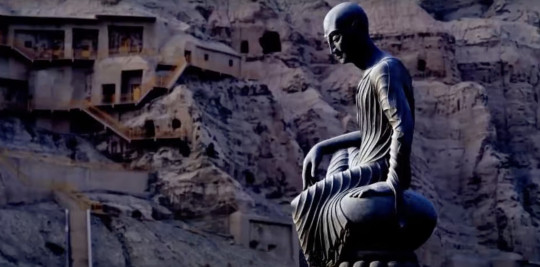
[画像: 鳩摩羅什 (くまらじゅう、梵:クマーラジーヴァ、344年 - 413年) は、亀茲国 (きじこく: 中国新疆ウイグル自治区クチャ市) 出身の西域僧、仏教普及に貢献した訳経僧である。下記は彼により紹介された逸話の一つであると推定されている。]
ブッダから弟子たちへ、ミニシリーズ (16)
五百台の薪 〜 決して遅くはない
酒浸りになっていた老人が、自己を反省して釈迦に会いにやって来た。彼は、これまでに自分が犯した罪業の報いを恐れていた。そんな老人に向かって、釈迦は次のように教えた:
「かりに白象の引く五百台の車いっぱいに積んだ薪を地面に降ろして、これを全部燃やすには、車何台分の火が必要か?」と問う釈迦。
「車何台分の火ですって?いいえ、ほんのちょっぴり、豆粒ほどの火で十分です」と答える老人。
「そうだ。あなたの重ねた罪が、たとえ車五百台分であったとしても、懺悔をすれば消えるのだ」と釈迦は答えた。
衆経撰雑譬喩 (アヴァダーナ) 40
注: アヴァダーナとは、仏典経典の分類である十二部経のひとつで、前世の善行を後世の出来事に結びつける仏教文献の一種。主に仏弟子の現世と過去(前世)の物語を指し、善因善果と悪因悪果の真理を説く。アヴァダーナは基本的に、紀元後数世紀にインド北部から北西部にかけて栄えた部派仏教で発達した文学である。
ただし、アヴァダーナと呼ばれるものの、釈迦の前世に関する話が多いため、ジャータカ(参照)と混同されることもある。仏教教団が発達するにつれて、近隣の方言やサンスクリット語と混じり合い、地域性を免れた混成仏教サンスクリット語が形成されたと考えられている。そのため、これらの仏典の詳細や経緯は明らかにされていない。
112 notes
·
View notes
Text
Beautiful Non-National Flags, Part 1
So many people see and love the flags of the 193 UN recognized nations, but I want to take a look at a few of my favorite regional/provincial/people group flags around the world.
One of my favorite flags, and I think one of the most beautiful flags, is the banner of East Turkestan

The Kökbayraq, or sky flag, represents both the geographic region of East Turkestan, and the Uyghur people, a Turkic people group located in what is now Xinjiang Autonomous Region, People's Republic of China (PRC). The flag was flown by the short lived (one year) reign of the Republic of East Turkestan (1933-34), and has been used by the diaspora of the Uyghur people as they flee the authoritarian rule of the PRC. In the modern day, it serves as symbol of protest against the ongoing genocide being conducted by the Chinese Communist Property.
The beautiful simplicity of the flag and its striking blue color make the flag instantly eye-catching. It's similarity to the Turkish flag is no coincidence, it was designed to harken back to the Turkish flag. The beautiful sky blue represents all Turkic people. While the crescent and star can represent Islam, in this flag the crescent represents the idea of being victorious, and the star represents the nation itself.
The flag follows a 2:3 ratio and all of the design aspects follow the same guidelines as the flag of Türkiye. It was formalized and adopted in 1993 and the East Turkestan Government in Exile claims it at the official flag of the Republic of East Turkestan
As this is a flag I personally own, I'm more than happy to fly it when I can and speak about it. This flag is easily in my Top Ten list because of it's beauty, and I've used the the exact shade of blue in a couple of flag designs.
I highly recommend anyone interested research the culture and history of the Uyghur people, and learn about their plight as they're subjugated under the iron fist of the Chinese Communist Party.
#vexillography#vexillology#flag design#flag#flag summary#east turkestan#xinjiang#free east turkistan#flag of ethnic group#nonnational flag#regional flag#uyghurs
45 notes
·
View notes
Photo
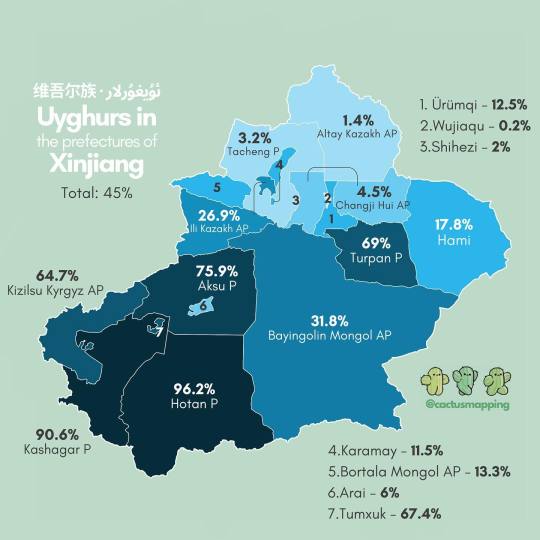
Percentage of ethnic Uyghurs among the total population at the prefecture-level in Xinjiang Uygur Autonomous Region
by cactusmapping
88 notes
·
View notes
Text
Bronze Age ice skates with bone blades discovered in China

Archaeologists in China have unearthed 3,500-year-old ice skates crafted from animal bone in the country's western Xinjiang Uyghur Autonomous Region, a mountainous area that some archaeologists think was the birthplace of skiing.
These ice skates, the oldest ever found in China, were made from the bones of oxen and horses, according to a translated statement. They were found in a tomb in the Gaotai Ruins, about 240 miles (385 kilometers) west of the regional capital Ürümqi, archaeologists with the Xinjiang Uyghur autonomous regional government said at a news event on Feb. 27.
It's not known if the skates were used for hunting or for regular travel. They consist of a straight piece of bone with holes at both ends so they could be strapped to footwear. The resulting "blade" is very flat compared with modern skates, but it formed a cutting edge that allowed the wearer to glide across the ice. Read more.
379 notes
·
View notes
Text
I last saw my old professor Abduqadir Jalalidin at his Urumqi apartment in late 2016. Over home-pulled laghman noodles and a couple of bottles of Chinese liquor, we talked and laughed about everything from Uighur literature to American politics. Several years earlier, when I had defended my master’s thesis on Uighur poetry, Jalalidin, himself a famous poet, had sat across from me and asked hard questions. Now we were just friends.
It was a memorable evening, one I’ve thought about many times since learning in early 2018 that Jalalidin had been sent, along with more than a million other Uighurs, to China’s internment camps.
As with my other friends and colleagues who have disappeared into this vast, secretive gulag, months stretched into years with no word from Jalalidin. And then, late this summer, the silence broke. Even in the camps, I learned, my old professor had continued writing poetry. Other inmates had committed his new poems to memory and had managed to transmit one of them beyond the camp gates.
In this forgotten place I have no lover’s touch
Each night brings darker dreams, I have no amulet
My life is all I ask, I have no other thirst
These silent thoughts torment, I have no way to hope
Who I once was, what I’ve become, I cannot know
Who could I tell my heart’s desires, I cannot say
My love, the temper of the fates I cannot guess
I long to go to you, I have no strength to move
Through cracks and crevices I’ve watched the seasons change
For news of you I’ve looked in vain to buds and flowers
To the marrow of my bones I’ve ached to be with you
What road led here, why do I have no road back home
Jalalidin’s poem is powerful testimony to a continuing catastrophe in China’s Xinjiang Uighur Autonomous Region. Since 2017, the Chinese state has swept a growing proportion of its Uighur population, along with other Muslim minorities, into an expanding system of camps, prisons and forced labor facilities. A mass sterilization campaign has targeted Uighur women, and the discovery of a multi-ton shipment of human hair from the region, most likely originating from the camps, evokes humanity’s darkest hours.
But my professor’s poem is also testimony to Uighurs’ unique use of poetry as a means of communal survival. Against overwhelming state violence, one might imagine that poetry would offer little recourse. Yet for many Uighurs — including those who risked sharing Jalalidin’s poem — poetry has a power and importance inconceivable in the American context.
#current events#poetry#politics#chinese politics#oppression#censorship#resistance#imprisonment#uyghur genocide#china#xinjiang#uyghurs#abduqadir jalalidin
180 notes
·
View notes